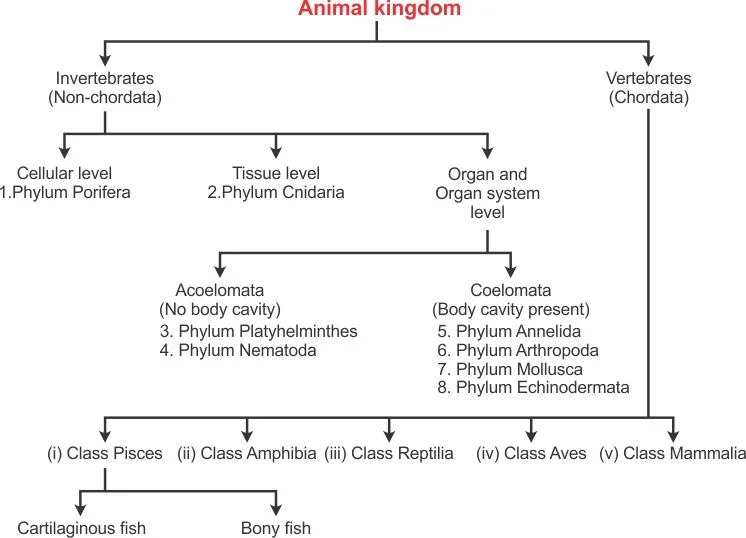![]() May 28, 2024
May 28, 2024
![]() 1481
1481
![]() 0
0
The Five Kingdom system (Monera, Protista, Fungi, Plantae, Animalia) provides a base. Scientific progress necessitates ongoing refinement. Taxonomy groups organisms based on shared traits, creating a branching hierarchy – the “tree of life” – that reveals evolutionary connections and biodiversity.

Characteristics of the Five Kingdoms
| Characteristic | Monera | Protista | Fungi | Plantae | Animalia |
|
Cell type |
Prokaryotic | Eukaryotic | Eukaryotic | Eukaryotic | Eukaryotic |
| Cell wall | Noncellulosic
(Polysaccharide + amino acid) |
Present in
some |
Present
(without cellulose) |
Present
(cellulose) |
Absent |
| Nuclear
membrane |
Absent | Present | Present | Present | Present |
| Body
organisation |
Cellular | Cellular | Multiceullar/
loose tissue |
Tissue/
organ |
Tissue
/organ/ organ system |
| Mode of
nutrition |
Autotrophic
(chemosynthetic and photosynthetic) and Heterotrophic (saprophytic/ parasitic) |
Autotrophic
(Photosynthetic) and Heterotrophic |
Heterotrophic
(Saprophytic/Parasitic) |
Autotrophic
( Photosynthetic) |
Heterotrophic
(Holozoic/ Saprophytic etc.) |
| Must Read | |
| Current Affairs | Editorial Analysis |
| Upsc Notes | Upsc Blogs |
| NCERT Notes | Free Main Answer Writing |
The Five Kingdom Classification (Monera, Protista, Fungi, Plantae, Animalia) established a foundational framework for understanding life’s diversity. However, advancements in scientific techniques and our evolving comprehension of life necessitate a dynamic system. Classification continues to adapt, incorporating new discoveries and offering a more nuanced perspective on Earth’s remarkable biological tapestry.
<div class="new-fform">
</div>
Latest Comments